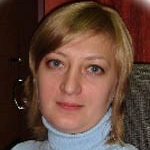Structural and Spectroscopic Studies of Rare Earth Doped Crystals
A special issue of Crystals (ISSN 2073-4352). This special issue belongs to the section "Inorganic Crystalline Materials".
Deadline for manuscript submissions: closed (20 April 2023) | Viewed by 6575
Special Issue Editors
Interests: crystal growth; liquid-phase epitaxy; glassy materials; crystal structure; borates; tantalates; new materials for non-linear and laser applications
Interests: rare-earth ions; solid state; Stark energy levels; electron transitions; optical spectroscopy; Raman spectroscopy; vibrational spectroscopy; luminescence; laser materials; laser cooling
Interests: sol-gel films; photonic materials; photonic crystals; rare-earth luminescence; solid state lighting; frequency conversion; glass structure; glass crystallization
Special Issues, Collections and Topics in MDPI journals
Special Issue Information
Dear Colleagues,
In recent decades, rare-earth (RE) dopants have played a crucial role in the development of functional materials, and have been used in the materials to improve their properties and expand their applications. RE compounds exhibit a wide variety of optical, luminescent, magnetic, and multiferroic properties. They are promising candidates for optical signal processing, lasing, optical quantum technologies, quantum nanophotonics, free-space optical communication, bioimaging, laser cooling. However, the interplay between their structural and spectroscopic characteristics is still under debate. The Special Issue "Structural and Spectroscopic Studies of Rare Earth Doped Crystals" is concerned with some key problems selected from a wide range of structural and spectroscopic studies of RE-activated solids, including both crystalline and glassy materials. This issue may become status reports summarizing the progress achieved in the last five years.
In this Special Issue, studies addressing or related to the following topics are welcome:
- synthesis and growth of rare-earth doped crystals and glassy materials;
- characterisation of rare-earth doped materials using spectroscopic, microscopic, XRD, and other advanced techniques;
- analysis of the energy transfer processes;
- upconversion efficiency;
- new host materials for efficient emission.
Dr. Elena Volkova
Dr. Elena Dobretsova
Prof. Dr. Rui M. Almeida
Guest Editors
Manuscript Submission Information
Manuscripts should be submitted online at www.mdpi.com by registering and logging in to this website. Once you are registered, click here to go to the submission form. Manuscripts can be submitted until the deadline. All submissions that pass pre-check are peer-reviewed. Accepted papers will be published continuously in the journal (as soon as accepted) and will be listed together on the special issue website. Research articles, review articles as well as short communications are invited. For planned papers, a title and short abstract (about 100 words) can be sent to the Editorial Office for announcement on this website.
Submitted manuscripts should not have been published previously, nor be under consideration for publication elsewhere (except conference proceedings papers). All manuscripts are thoroughly refereed through a single-blind peer-review process. A guide for authors and other relevant information for submission of manuscripts is available on the Instructions for Authors page. Crystals is an international peer-reviewed open access monthly journal published by MDPI.
Please visit the Instructions for Authors page before submitting a manuscript. The Article Processing Charge (APC) for publication in this open access journal is 2600 CHF (Swiss Francs). Submitted papers should be well formatted and use good English. Authors may use MDPI's English editing service prior to publication or during author revisions.
Keywords
- rare-earth ions
- optical spectroscopy
- crystal growth
- single crystals
- glass ceramics
- solid state
- Stark energy levels
- electron transitions
- Raman spectroscopy
- vibrational spectroscopy
- luminescence
- laser cooling
- magnetic properties







